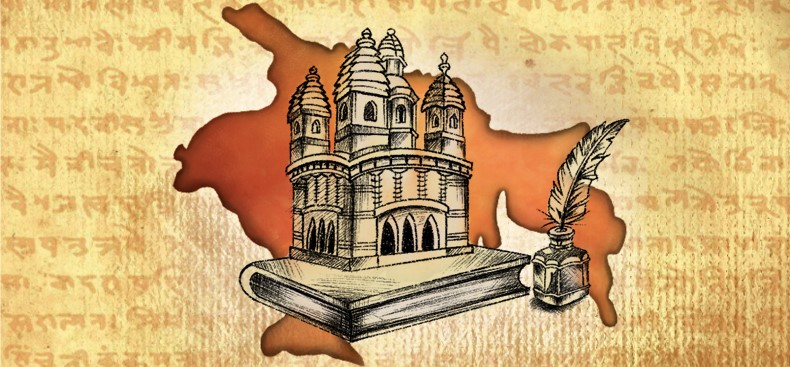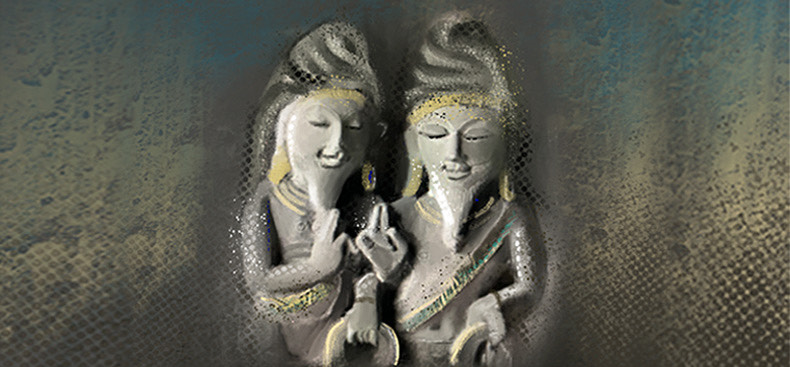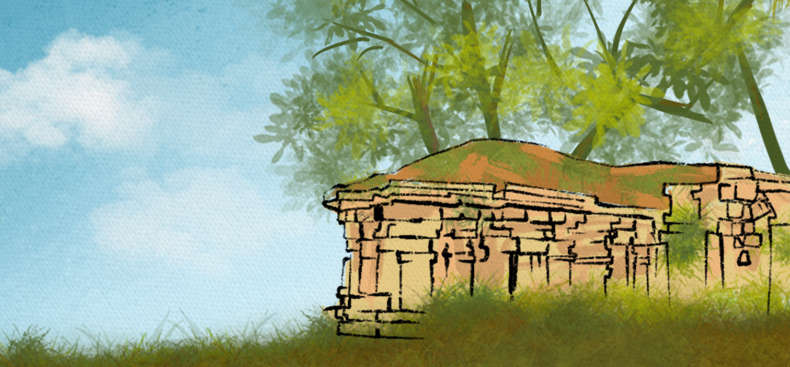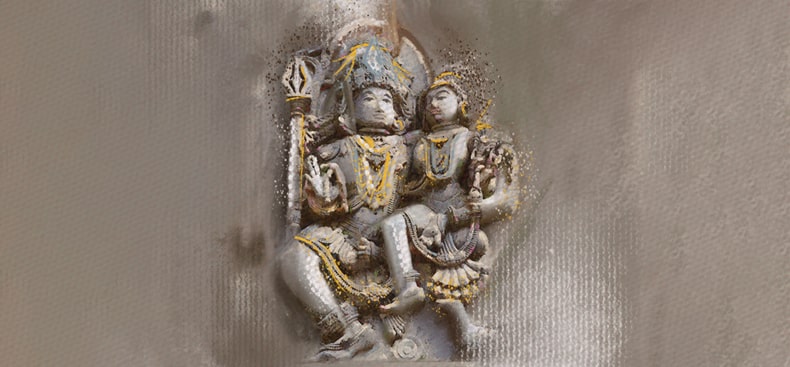It was an age where the erudition of a king was an important mark of his kingship. The great Rāja Bhoja (11th century) wrote treatises on architecture, aesthetics and philosophy; the Chālukya king, Someśvara III, wrote the famous Mānasollāsa, an encyclopaedic treatise covering a wide range of topics, including society, politics, music, literature and science. It was as if the Indian kings had a premonition of what was to come and felt an urgent need to complete their intellectual projects for posterity.
The flourishing of the sciences, literature, and art during the 11th- 13th century was largely due to the support and sponsorship of the Indian rulers. The kings of Kashmir provided patronage to vast networks of scholars and philosophers; the Gāhaḍavāla dynasty commissioned the writing of dharmaśāstra nibandhas and made Banaras the centre of Indian intellectual life; the Mithila kings made their kingdom an epicentre of Nyāya-Vaiśeṣika scholarship; the Malwa kingdom made great advancements in aesthetics and architecture; the Yādava kings of Maharashtra were prolific patrons of music, art and literature. This is but a fraction of intellectual activity in the Indian courts during the centuries before the Islamic invasion — I have not even mentioned the classical scholarship that existed in the courts of Kaliṇga, Cholā or Hoysalas.
All this received a grievous setback with the establishment of the Delhi Sultanate, whose epistemic and religious orientation was not very favourable towards Hindu arts and literature. In this short essay, I will attempt to provide a glimpse of the flourishing intellectual scene in Bengal just before its invasion.
Bengal during the Sena Years
In terms of its artistic and literary achievement, the ‘golden era’ of Bengal corresponds roughly to the reign of Ballālasena and Lakṣmaṇasena between 1160-1206 CE. It was under Sena rule that the famous ṭols of Navadvīpa were established. To these ṭols can be traced the origins of the Navadvīpa school which produced the great naiyāyikas (scholars of Nyaya philosophy) and the smṛiti writers of the 16th century.1Monmohan Chakravarti, “Sanskrit Literature in Bengal During the Sena Rule,” Journal & Proceedings of the Asiatic Society of Bengal (1906): 157. However, during the 12th century, the Sena kings generally focussed on Sanskrit kāvya and the revival of Hindu ethics and rituals literature.
The Sena king, Ballālasena, with the help of his preceptor Aniruddha, composed vast compendia entitled ‘sāgaras’ or ‘seas’ on topics related to ethics, rituals and dharma. These five ‘seas’ are called the Sea of Consecrating Temples (Pratiṣṭhāsāgara); the Sea of Good Conduct (Ācārasāgara); the Sea of Religious Observances (Vratasāgara); the Sea of Giving (Dānasāgara); and, finally, the Sea of Magical Powers (Adbhutasāgara).2Maria Heim, Theories of the Gift in South Asia: Hindu, Buddhist, and Jain Reflections on Dāna (New York: Routledge, 2004), 5. The last work, left unfinished by Ballālasena, was completed by Lakṣhmaṇasena.
These are works of prodigious learning covering almost every conceivable topic on Hindu ethics and dharma. The Dānasāgara, for instance, is a seven hundred pages long Sanskrit text devoted exclusively to the theories of gift-giving. It exhaustively covers the various gifts and rituals associated with gift-giving, the role of the giver and the receiver, and the dharmic imperative for giving gifts. In general, this period witnessed a flurry of dharmaśāstra digest compositions by the kings who were engaged in fighting the Turkic invaders, be they the kings of Banaras, Mithila, Maharashtra or Bengal. A magisterial corpus of dharma was one means of moral and cultural unity in that fight.3Theodore Benke, “The Śūdrācāraśiromaṇi of Kṛṣṇaśeṣa: A 16th Century Manual of Dharma for Śūdras” (2010), 251. These vast compendia were monuments of the accumulated sanātana culture that reminded the kings of what was at stake in their fight against the turakṣas.
Lakṣmaṇasena, the son of Ballālasena and the last well-known king of the Sena dynasty, was a prolific patron of kāvya literature. Some of the great poets of that age — Dhoyī, Jayadeva, Śaraṇa, Umāpatidhara, and Govardhana — were writing under his patronage. Most of their compositions are not available to us. However, some fragments of their work are preserved in one of the earliest Sanskrit anthologies, Saduktikaraṇāmr̥ta of Srīdhardāsa, composed in 1205 CE during the twilight years of Lakṣhmaṇasena. This anthology gives a selection of more than two thousand stanzas from five hundred authors and poets. Such Sanskrit anthologies grant us a glimpse of the sheer richness and quantity of Sanskrit kāvyas being produced during this period.
Fortunately, there are two surviving kāvya of these famous poets at the court of Lakṣmaṇasena. Dhoyī, the poet laureate of the Sena dynasty, composed the famous dūtakāvya (messenger poem), Pāvanadūta (wind-messenger), a short poetical work of 104 stanzas in the mandakrānta meter in imitation of the celebrated poem of Kālidāsa, Meghadūta. This is probably the first dūtakāvya composed in the style of Kālidāsa. After Dhoyī, more than thirty-five such dūtakāvyas were composed by poets across India during the next few hundred years.4Chintaharan Chakravarti, Pavandūta: Sanskrit Text with Introduction (Calcutta: Vidyodaya Press, 1926), 1.
Jayadeva’s Gitagovinda is too well-known to need any introduction. This short poem, known all across India for its stirring lyrical quality and its evocation of śṛṇgārarasa, stands as an epitome of Bengal’s contribution to Sanskrit literature. It is hard to imagine Vaiṣṇava poetry and painting without the overwhelming influence of Jayadeva’s masterpiece. The poem has a quasi-scriptural status in Bengal and Orissa Vaiṣṇavism. Jayadeva’s illustrious literary career flourished under the patronage of the highly erudite Lakṣmaṇasena, who is described by the epithet “Highest Vaiṣṇava” (paramavaiṣṇava).5Barbara S. Miller, Gītagovinda of Jayadeva: Love Song of the Dark Lord (Delhi: Motilal Banarsidass, 1984), 4. It is a grievous loss that just one poem of Jayadeva has survived.
Other than literature and dharmaśāstra, there were intellectual luminaires in Lakṣmaṇasena’s court such as Halayudha Miśra who wrote voluminous scholarly works on mīmāṃsā, Vedic rituals, grammar and sectarian religious manuals. He was one among the many scholar-pandits in the Sena court who were prodigiously learned in different branches of Hindu śāstras and smṛitis. Based on scholarly production during that time, it seems that Bengal was one of the great centres of Hindu learning in India.
Bengal after the Senas
However, the implantation of Islamic rule in Bengal during the 13th century proved a great setback for classical learning and scholarship. With the collapse of patronage, Sanskritic learning and literary activity came to a grinding halt. For the next three hundred years, not much Sanskrit literature emerged out of Bengal (as far as I am aware). There were just a few exceptions. The educational ṭols, which had gained prominence during the Sena dynasty, continued to function, albeit in a much-constrained manner. These institutions continued to produce classically trained scholars. This period, however, saw some seminal Bengali-Sanskrit compositions – the Kṛttivāsī Rāmāyaṇ composed by Bengali poet Krittivas Ojha and the Vaiṣṇava poetry of Chandidas.
The next intellectual renaissance of Bengal would take place in the 16th century during the reign of the Hussain Shāhi, an unexpectedly liberal patron of classical Hindu learning and scholarship. It was during this period that one of the greatest philosophers of the age, the Mithila trained naiyāyika, Raghunātha Śiromaṇi, established his ṭol in Bengal’s Navadvīpa to teach the next generation of Navya-Nyāya scholars. Navadvīpa, along with Banaras, emerged as the premier centre of scholarship in medieval India. These naiyāikas wrote scholarly texts on almost every branch of knowledge known to them: metaphysics, grammar, logic, mathematics, law and linguistics. Furthermore, during that epoch, Bengal produced the greatest Vedāntin of the age, Madhusūdana Sarasvatī, the great Dharmaśāstra scholar Raghunandana, whose works established the Bengal school of Hindu Law, and also the great Tantra scholar Kṛṣṇānanda Āgamavāgīśa.
This era of astonishing scientific, literary and philosophical activity eventually came to a close during the tumultuous decades of the 18th century, following British conquest and the gradual economic impoverishment of Bengal under colonial rule (see here). A century or so later, during the colonial period, there was a re-emergence of intellectual and artistic life, sometimes dubbed as ‘Bengal Renaissance’, but this British-inflected revival spluttered and came to a halt around the time of independence.
To conclude, Bengal’s contribution to the pan India Sanskritic civilisation is seminal but has not received the scholarly interest such vast written monuments of Bengal Sanskrit culture deserve. For instance, the very important work, Ballālasena’s Dānasagara has not been translated into English or any other Indian language. Similarly, except for a few popular Navya-Nyāya manuals, almost none of the work of the great Naiyāyikas of Bengal have been translated. The works of Madhusūdana Sarasvatī and Raghunandana also await urgent scholarly attention. The new generation of Bengalis (and Indians) need to be made aware of their vast intellectual inheritance, which did not begin with Raja Ram Mohan Roy.





Leave a Reply